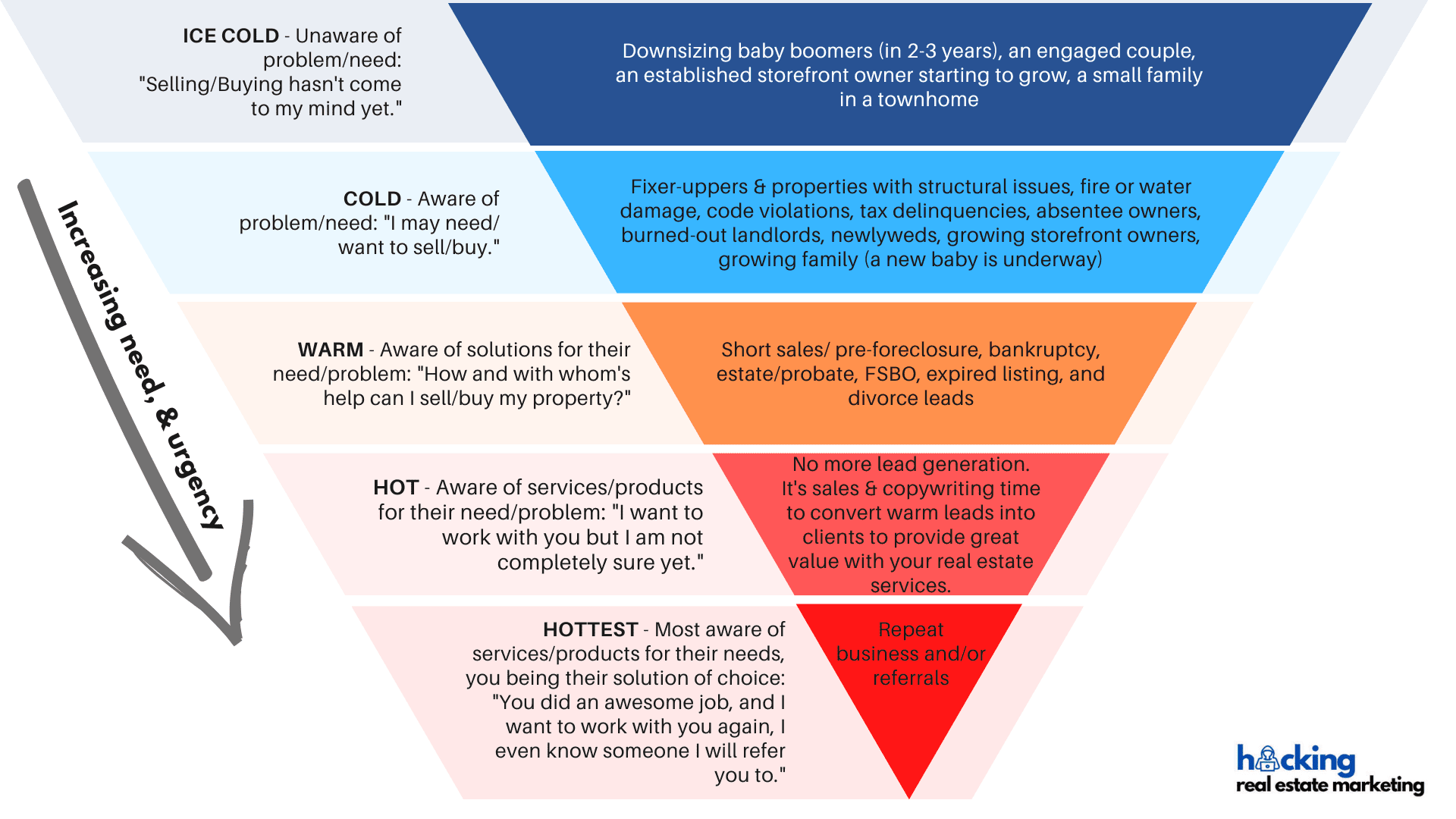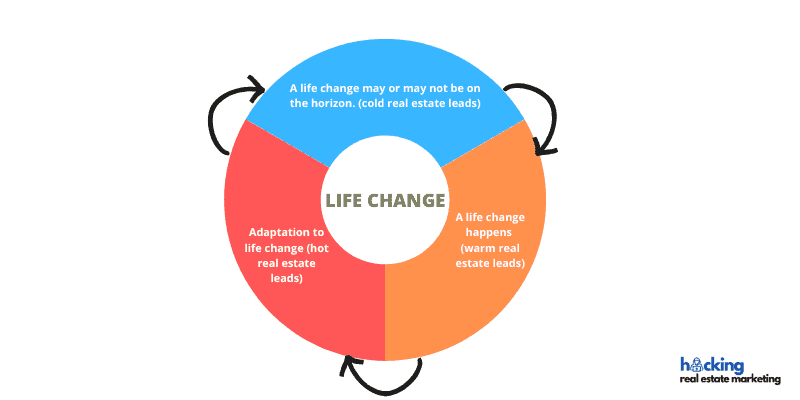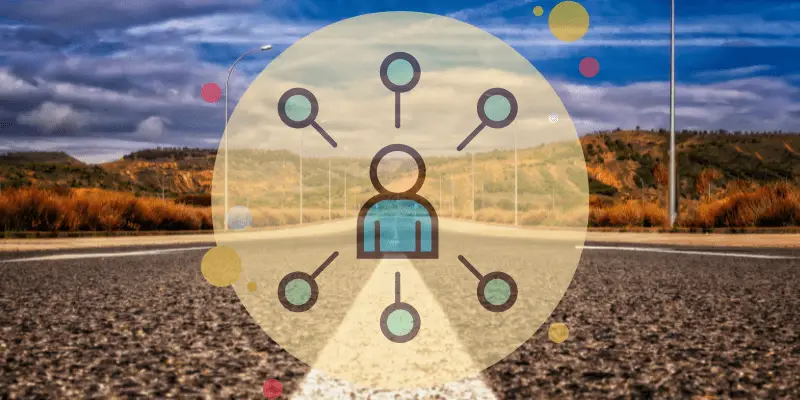Imagine there was a world with only one type of real estate lead.
You run a real estate lead generation campaign, get all the contact information, and then call the prospect.
The prospect immediately answers the phone, and you can send over a listing agreement after a few minutes without meeting them.
You get it back signed after a few minutes and sell the property after one week.
That can happen…in Narnia.
The reality outside Narnia is that most prospects are not ready to make a decision on the first call.
Why is it so?
There are different types of real estate leads.
And in this article, I will cover that in detail.
- What real estate leads are (if you are interested in the basic definition)
- How real estate agents get leads…and the one mistake often made
- How the real estate leads’ product and service awareness levels and customer journey intertwine just fine
- What you can learn from the customer journey for different types of real estate leads
- How to determine the real estate lead type [cold or hot]
- The chances of a real estate lead gen method getting you hot or cold leads
What Are Real Estate Leads?
Leads in sales are people or entities that show interest in your products or services due to referrals and different marketing and lead generation campaigns.
Consequently, real estate leads are people of various degrees active in the real estate market, mostly buyers and sellers showing interest in your products or service.
So they are real estate sales contacts that may become your seller or buyer clients.
How Do Real Estate Agents Get Leads…And the One Mistake Often Made
Social media has become the go-to platform for many real estate agents to generate leads.
But they are all over the place and use different types of paid and unpaid outbound marketing, paid and unpaid inbound marketing methods, their database (past clients), and industry-adjacent referral partners.
Outbound marketing is another word for push marketing.
It’s when the sales message about your product or service is “pushed” on targeted prospects (e.g., cold calling).
So you actively search and find prospects and then initiate contact.
You can find an overview of many different types of prospecting methods clearly falling into the category of outbound or push real estate marketing in my article, “All You Need to Know About Real Estate Prospecting Rates. “
Inbound marketing is the other way around, also called pull marketing.
Some call it attraction marketing, too.
Here the prospects are attracted to your sales message.
You primarily achieve this via content marketing in different formats (e.g., articles, videos, etc.) distributed on various platforms (e.g., your website, social media platforms, etc.).
Two of my articles that address this are “254 Real Estate Content Ideas & Samples [How-To Included]“, “Real Estate Content Marketing – Is It Low Cost?“and “How to Crush It with Real Estate Referrals for More Profits. “
Many real estate agents, and other real estate professionals, make one mistake, however; approaching different lead generation methods.
This problem is not only limited to the real estate industry.
This likely happens in different industries and people in sales positions, having to generate and then work with leads turning out to be of lower quality.
It is, focusing too much on generating as many leads as possible, neglecting where they are now on their customer journey and regarding the different levels of product and service awareness.
How the Real Estate Leads’ Product and Service Awareness Levels and Customer Journey Intertwine Just Fine
Let’s recap the customer journey shortly, which I covered in my article “254 Real Estate Content Ideas & Samples [How-To Included]”.
The customer journey is the different stages a potential customer interacts with a business or brand, including after a transaction has concluded.
Actually, that’s why sales funnels exist.
In my opinion, the best-converting sales funnel is the funnel closest aligned with the customer journey of an ideal client, considering the different levels of product and service awareness.
Even better, you can build a customer journey by finding your target real estate clients’ different product and service awareness levels.
I will explain this using the example of probate seller leads (also read my article on this topic here.
First, let’s get to the different product and service awareness levels…
1) Unaware:
The potential property heirs don’t know yet that without estate planning, the house they may inherit may go through a probate process.
2) Problem/Need Aware:
They learned by watching a video from a real estate professional specializing in probates (maybe yours when you do content marketing) that their parents won’t avoid a probate process.
So they identified a potential problem concerning selling an inherited house without court involvement.
3) Solution Aware:
Since they didn’t like what they learned, they researched and found different attorneys specializing in probates.
However, they also kept your video about estate planning in mind that you did with a probate attorney.
They know now that estate planning is likely the best way to handle their situation.
4) Product Aware:
They revisit your website, but this time they find an interview-style article where you cover the estate planning topic with the probate attorney you partnered with.
It includes an area where you can schedule an appointment with the probate attorney for a free initial consultation.
They decide to make an appointment.
5) Most Aware:
The appointment with the probate attorney went well, and he spoke well of your real estate services and your specialty in probate real estate.
Half a year later, the last remaining parent sadly passed away, and since you handled the sale of the inherited property well and according to the estate plan, they started to speak well of you and refer you to friends.
So the clients now know your services/ or products well.
Now, how does this intertwine with the customer journey?
To convert product and service awareness levels into the customer journey, we only need to switch the perspective to individual interaction and communication levels.
So you ask the question: how will the ideal real estate prospects interact and communicate with my business at the different levels of awareness?
You may also want to break it down to an individual client avatar level. So, let’s just call the avatar for the customer journey Paul.
Paul is in his mid-fifties and lives out of state. So do his siblings.
A few years back, they had already lost their mother, and now, unfortunately, their father is ill too. Doctors give him one year max.
Sad and stressful emotions let Paul think of having to deal with everything that comes with that, including the house sale.
But since his father has a will, everything should be fine. So he thinks.
Since he is looking for emotional support on different internet forums,
YouTube’s algorithm must have caught on to that (thank you, browser cookies). Out of nowhere, a video about estate planning pops up.
It is a webinar of two people, a probate attorney and a real estate agent specializing in probates.
He watches it until the end and bookmarks the realtors and the attorney’s website. He learns about a problem that he didn’t even think he had.
His father’s will is not enough to avoid a time-consuming probate process.
Via email, he also shares the video with his siblings, who don’t know about the potential problem.
Although the two professionals make a good impression in the video, he thinks looking for additional information and solutions would be good.
So he switches from YouTube to Google Search and types in “estate planning attorneys in Alabama.”
Several search results pop up with different attorney offices and articles other attorneys and law college professors will appreciate, but too many technical and confusing terms for him.
So he visits the realtor’s website he saw a while back in the video with the hope that they are also operating in Alabama.
At least some good news. Both professionals do as he realizes when checking the contact page.
On the realtor’s website blog, Paul finds another article.
It’s an interview with the same probate attorney he saw in the YouTube video.
This time both go deeper into the nitty and gritty of estate planning.
The information provided convinces him to use the appointment scheduling form he finds at the end of the article to get a first free consultation with the probate attorney.
The consultation is done via a Zoom Conference call, and the attorney explains what his father could do to avoid a probate process.
Fast forward six months.
The estate planning did go well, but Paul is now grieving his father’s passing.
He is thankful they could still do the estate planning right on time, though.
Since the moment has come to sell the father’s house, the probate attorney mentions the probate-specialized realtor (maybe you) again. So Paul contacts them via email to set a listing appointment.
To avoid an overly extensive article, I will stop here and omit working into the most aware level of the customer journey.
But I hope you get the idea.
Remember, the customer journey can and should reveal the different stages of potential customers interacting with you (the business) until and after a transaction concludes.
And that’s what happened here. I bolded the parts where these stages and interactions reveal themselves.
What You Can Learn from the Customer Journey for Different Types of Real Estate Leads
Why did I visit product and service awareness levels and build a customer journey?
And how does this have anything to do with cold and hot real estate leads?
You could observe the transformation of Paul from a cold to a potential hot seller lead in both.
In an earlier section, I mentioned that when you focus too much on lead quantity in your lead generation endeavors, you can easily neglect where the people (leads) you target are on their customer journey.
So, before you target a type of real estate lead, you may want to take a step back and consider whether the type of seller or buyer you target is at the beginning (meaning cold) or approaching the end (meaning hot) of their customer journey.
By the way, this ties right into real estate niches and which ones you focus on, as discussed in my article “Real Estate Niches, and How to Get a Profitable One.”
Generally, the closer they are to the beginning of their customer journey, the more you will need to nurture them via a follow-up system.
The farther away a possible transaction with you is in the future.
The more they approach the end of their customer journey, the hotter these leads are.
To better illustrate this, I have designed this into an infographic which you can find below.

There are three things you can get out of this infographic when you look at it from a different perspective:
- You can use it to determine whether a real estate lead is cold or hot
- The chances of a real estate lead gen method generating hot or cold real estate leads
- An evergreen real estate lead cycle type to get further lead-generation ideas
How to Determine the Real Estate Lead Type [Cold or Hot?]
No matter what real estate lead generation method you choose and focus on, at some point in time, you will have to talk with a prospect via phone, Facetime, personal meetings, etc.
This is why qualification questions exist, to filter out the bad apples.
They try to help you determine whether there is a need, the time frame (urgency) if the prospect has the money/ is willing to pay you, and whether they are the decision-makers (the ability to make a commitment).
As you can see in the above infographic, at least by checking on their needs/ wants and urgency, you can learn whether your generated real estate leads are ice-cold or warm.
To illustrate this, I also added an arrow on the infographic.
The Chances of a Real Estate Lead Gen Method Getting You Hot or Cold Real Estate Leads
Suppose you do unpaid (time-consuming) inbound marketing and post general helpful content about your local neighborhood on social media.
What do you think are the odds that you will generate warm leads compared to when you do outbound marketing calling expired listings?
The chances are higher to get at least warm leads further down the product and service awareness levels by calling expired listings.
In contrast, more people will likely say: “Selling/buying hasn’t come to my mind yet, but it’s interesting information.”
It happens when you use untargeted social media postings of helpful general content about your neighborhood.
From this situation, we can extract a rule of thumb.
The more focused you can get with your lead generation method (outbound or inbound), targeting sellers or buyers aware of solutions for their problems and needs, the higher the chances they will be warm.
Therefore, real estate leads generated by search ads (e.g., Google) compared to social media (e.g., Facebook) are usually relatively better regarding quality.
Logically, someone searching already for a solution to a need or problem is already aware of it and thus further down in the awareness levels.
In contrast, someone “doom-scrolling” or “cat-scrolling” in their social media feeds may or may not be aware of having a problem or need when interrupted by your ad.
As a little recap for inbound and outbound marketing and lead generation methods, I have added a short overview linking to several of my articles.
Paid and Unpaid Outbound Real Estate Marketing/ Lead Generation:
- Cold calling
- Calling expired listings, divorces, probates, FSBOs
- Real estate direct mailing
- Text message prospecting
- Radio ads
- Local TV commercials
- Push notification ads
- PPC on social media (Facebook, Instagram, TikTok, YouTube, Waze, etc.)
- PPC on search engines (Google, Bing, Yahoo, etc.)
- Native ads
Paid and Unpaid Inbound Real Estate Marketing/ Lead Generation:
- Content marketing on social media (YouTube, Facebook posts, Instagram posts, TikTok, etc.)
- Content marketing on your website (blog articles, videos, downloadable whitepapers, free giveaways, etc.)
- Lead magnets in combination with email marketing (nurturing campaigns)
- Asking and answering questions on social media, forums, etc.
- Content marketing in larger publication channels (magazines, local newspapers, etc.)
- On-page SEO
- Guest-posting
- Webinars (with strategic partners)
Real Estate Referral Marketing (Strategic Partners):
- Partnering with divorce attorneys
- Partnering with probate attorneys
- Partnering with retirement home projects
Database marketing:
- Email advertising
- Past client direct mailing
- Past client retargeting via search and social ads
- Past client marketing
- Referral marketing
Getting back to the rule of thumb.
It also underlines the importance of focusing on a real estate niche.
You can better learn the individual customer journey of your ideal client. This will improve your targeting and your real estate sales copy.
It also shows that working with done-for-you lead generation companies is risky.
You can’t know how they generate leads and product and service awareness levels of prospects they focus on with their campaigns.
I leave you with an infographic that shows something I call the “evergreen real estate lead type cycle.”
It may help you find other ideas for different real estate customer journeys.

As you can see, it all circles around life changes.
And when you start to brainstorm different life changes (e.g., divorce, death, birth, career failure, career success, etc.) you may find additional real estate niches and starting points on the customer journey, and thus real estate lead generation targeting options.
This article has been reviewed by our editorial team. It has been approved for publication in accordance with our editorial policy.
- The Surprising Link Between Weight Loss Struggles and Real Estate Lead Gen Success - October 29, 2024
- Performance Risks of “Marketing ROI Black Boxes” for Real Estate and other Industries - October 15, 2024
- What You Don’t Measure in Real Estate Marketing… - October 1, 2024

